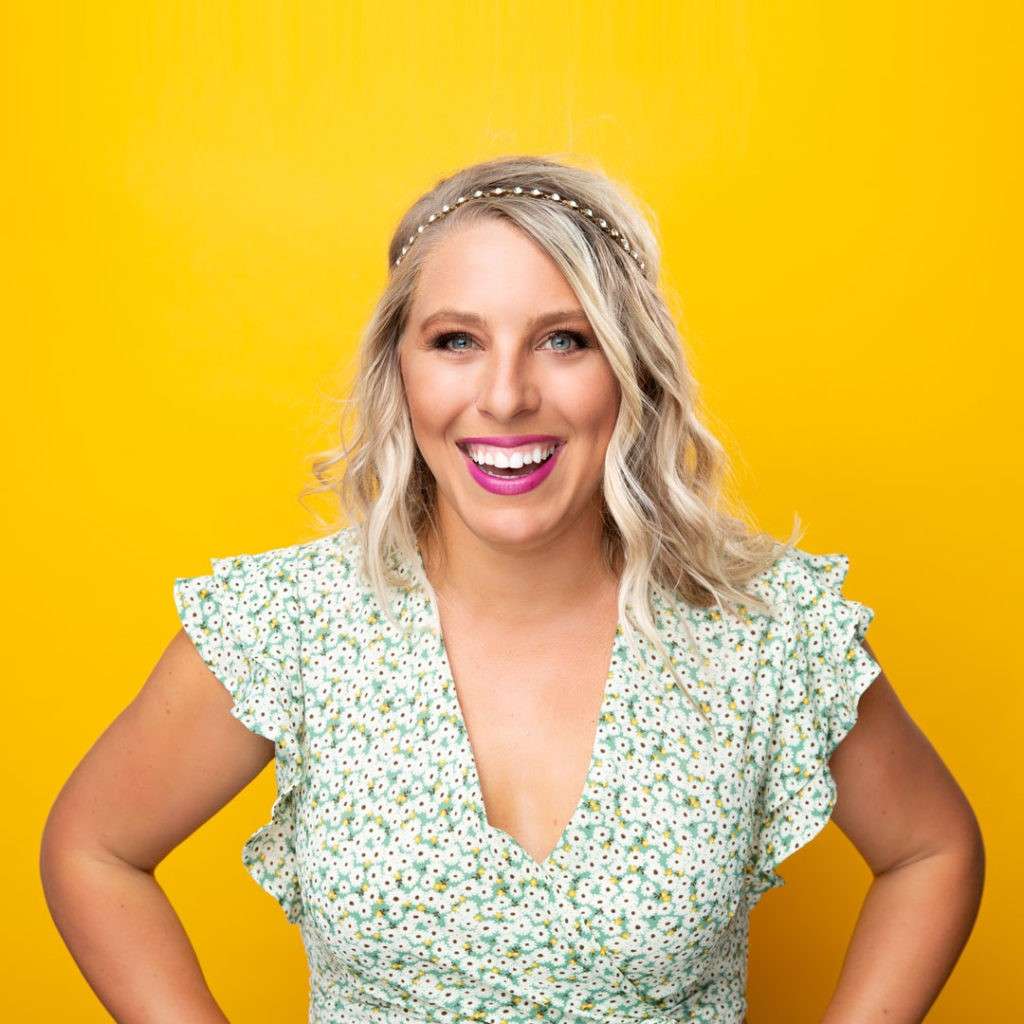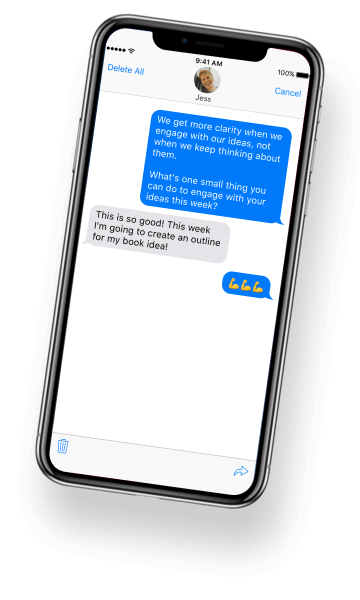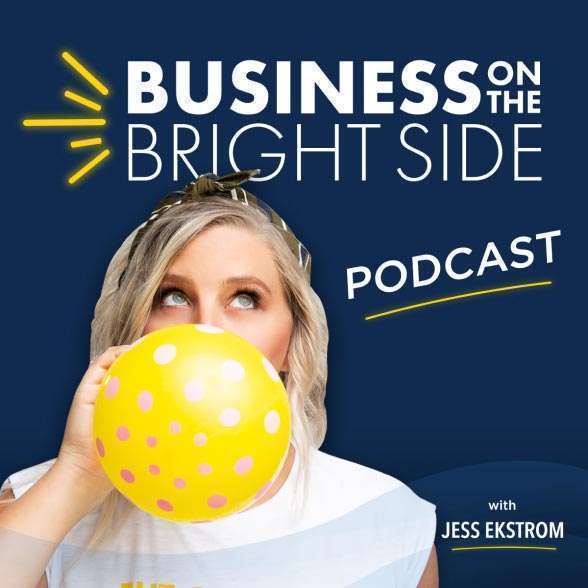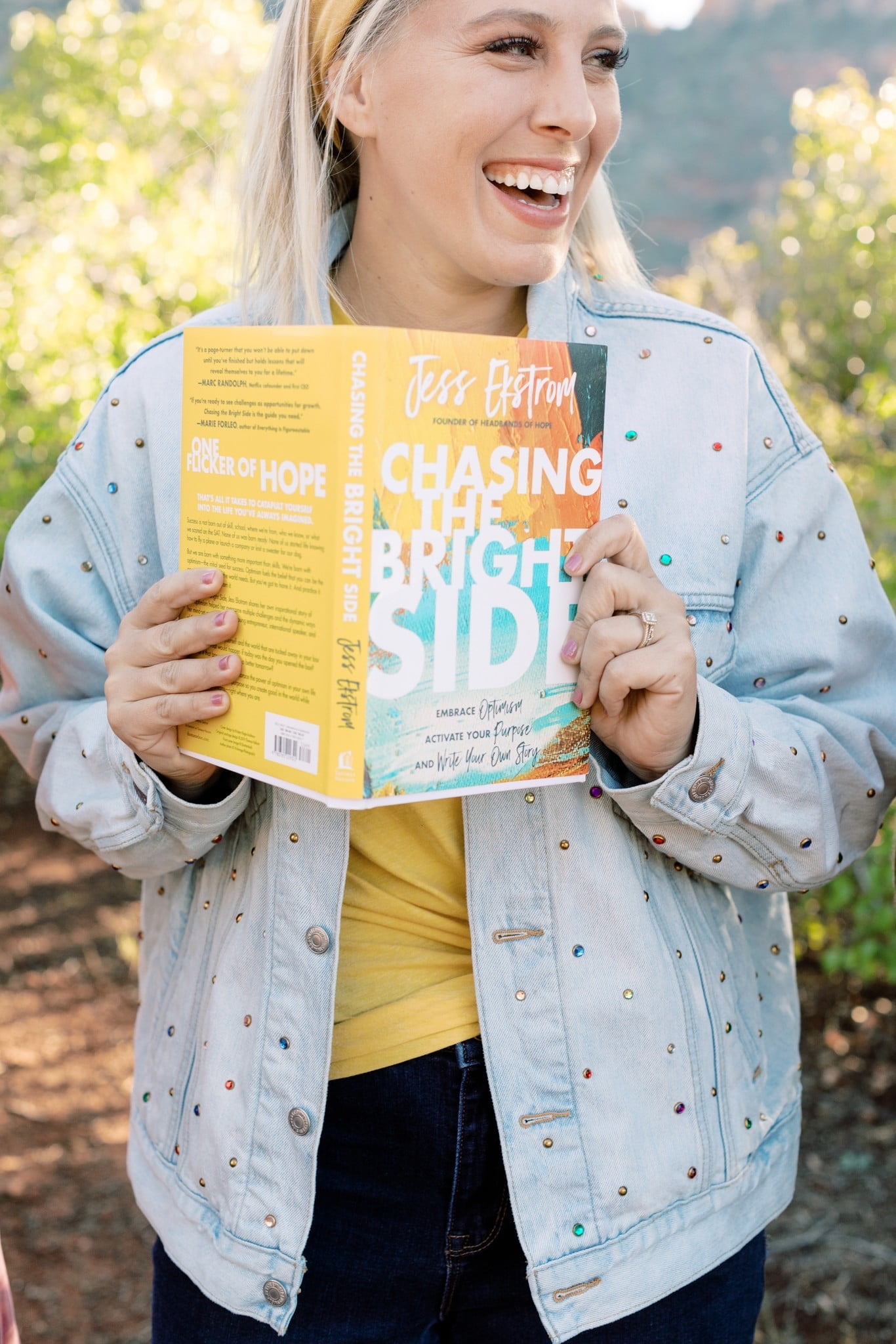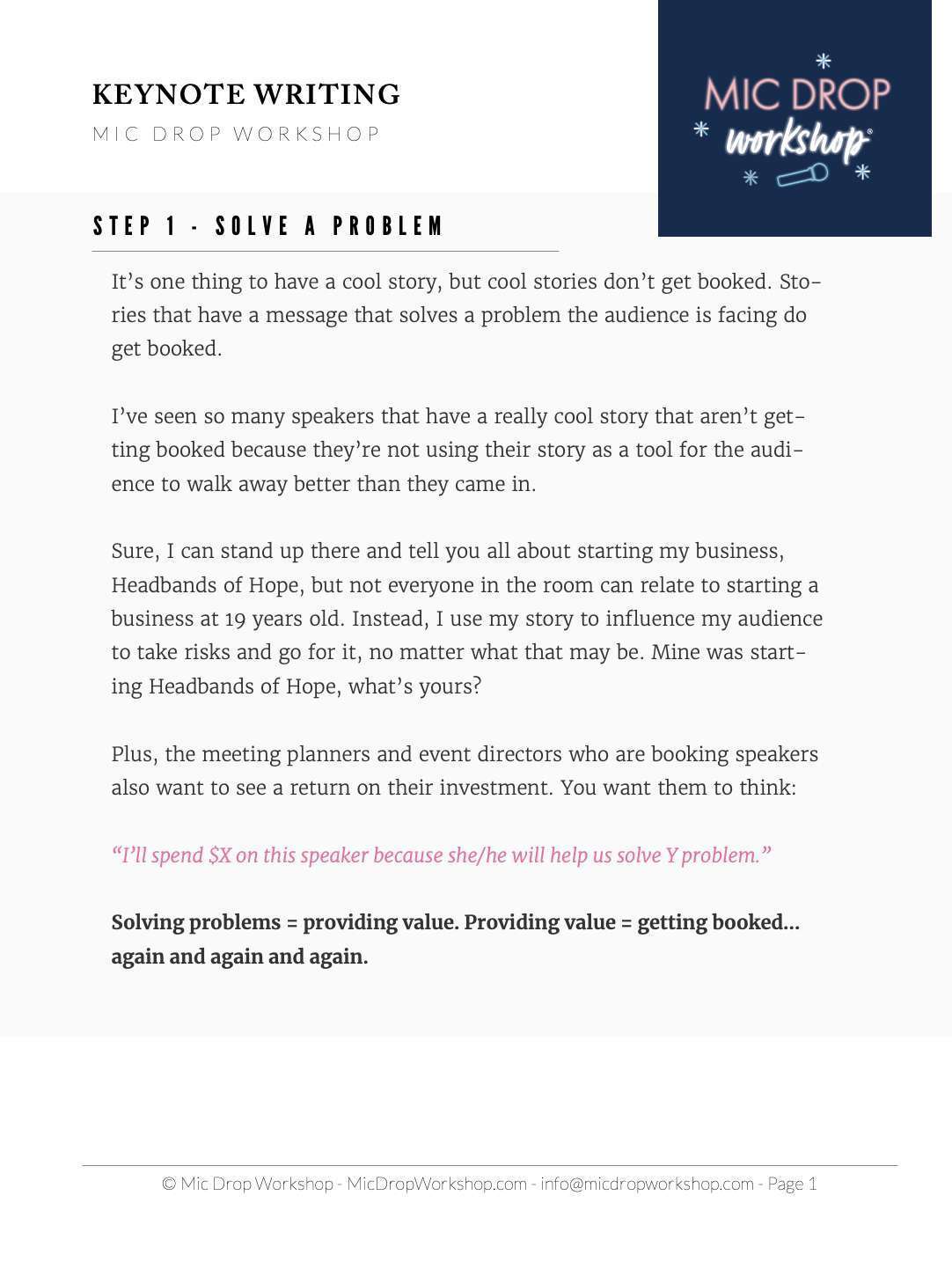SHOW NOTES:
Why do we feel burdened to always be connected to our phones and checking social media? We shouldn’t have to.
In this episode of Business on the Bright Side, Minaa B joins us to share how and why you should set digital boundaries in your life and business. Listen in as she describes the importance of understanding responsibilities in online relationships and communication when you’re setting those boundaries!
Setting Digital Boundaries (1:35)
Determine Your Why: Why are you going on social media at this time? (5:10)
Social Media Audit (7:55)
1. Check Your Screen Time
2. Look at Who You Follow
Understanding Responsibilities & Boundaries (9:00)
Vocalizing Boundaries (13:17)
One Liner: Normalize saying no in your life. (21:16)
Links
Book Pop Workshop
Your Body, Your Story Podcast
instagram.com/minaa_b
Minaab.com
Review the Transcript:
Jess:
Hey, everyone. Welcome back to Business on the Bright Side. Today, we have a special guest, Minaa B, on the podcast. Minaa is a writer, therapist, wellness coach and mental health educator. I first fell in love with Minaa because she is literally one of my favorite follows on Instagram. She has this way of really just simplifying things that might feel complex. And I tell her that in our interview, but today we are focusing on setting digital boundaries.
Jess:
We talk about boundary setting a lot, but I feel like digital boundaries are something that we don’t really talk about. So Minaa has some great tips around setting digital boundaries, because even I can use some less time on Instagram.
Jess:
What’s up, everybody? It is Jess Ekstrom and welcome to Business on the Bright Side, the podcast where you can learn how to make a living and make a difference at the same time.
Jess:
Life is short and so is my attention span, so let’s get started.
Jess:
Why are boundaries important? Why should we be thinking about setting them? Sometimes I felt like in my business, I didn’t want to come across as cold or harsh so I would just let anyone in, but then I was also just draining myself doing that. So in your words, why should we be thinking about setting boundaries?
Minaa B:
Boundaries are just essential in life. That’s really because the way I defined boundaries, it’s really about drawing a line and figuring out what you are responsible for and what you are not responsible for and how can you delegate and how can you mitigate those responsibilities, looking at it from a personal perspective or even a leadership perspective.
Minaa B:
I find that when we have boundaries, we are able to live healthier lives because we recognize that we don’t have to carry the burden or the weight of everyone else’s emotions or responsibilities. Also, we’re able to identify what belongs to us and what doesn’t belong to us. We’re also able to identify what we need in regards as help and what we realize that we can establish and maintain on our own.
Minaa B:
So when we execute boundaries, we’re really saying, “I’m responsible for this, you are responsible for that. And let’s talk about that. I’m responsible for my emotions, you’re responsible for your emotions. I’m responsible for my actions. You’re responsible for your actions.” And it just takes away the load of feeling, like I said earlier, of feeling like we have to carry everything that is around us, because that essentially is going to break us down.
Jess:
Like the gray area, the limbo of, “Should I be doing this or should I not?” Last night was a perfect example. I was watching the Tiger Woods documentary with my husband and I had all these DMs that I hadn’t responded to. And I felt like, “Oh, I need to take the time to respond to these people because they are messaging me.” And I’m like, but then I am essentially letting them… Not letting them, but in a way I felt like they were choosing my schedule for me. And so how does someone set boundaries in such a digital world where we are constantly feeling like there’s so many different ways for people to access us, whether that’s through email, DMs, whatever it might be. How do we do that? When I constantly feel like there’s so many ways that people can get in touch.
Minaa B:
Right. There are definitely so many ways. You have DMs, you have emails, you have all these different… You have Tweets-
Jess:
So many different mediums.
Minaa B:
[crosstalk 00:04:01].
Jess:
Still trying to find MySpace, like what’s the-
Minaa B:
Right, right. And then you have to manage comments. You have to manage DMs and all these different things. And you might even also want to network-
Jess:
Yeah, your platform’s huge. I’m sure you deal with this all the time.
Minaa B:
Yeah. Setting boundaries digitally can look like one setting of boundary with the whole entire digital space itself, so the first step could look like, let’s say, I want to just take a social media break. So that’s me not interacting with social media at all. And that could look like me not logging onto the app, that can look like me deleting the app. That can just basically me saying, “I’m not logging in for the day.”
Minaa B:
Another form of a digital boundary could be utilizing the app but determining how much time are you going to spend on this app. So with the amount of time that you’re choosing, what are the tasks that you’re going to do while you’re on apps? So am I just going on the app for five to 10 minutes to engage, and then I’m going to log off? Am I going on the app just to post information, share my content and then log off? Or you might determine during this timeframe, “I want to go on the app to respond to those messages, and then I’m going to log off.”
Minaa B:
So I do say determine your why, “Why am I going on social media at this moment and how long want to utilize this time?” So that I don’t end up doing scrolling, so that I don’t end up feeling like this content is overtaking me in some sort of way and I’m getting swallowed into this hole of having to respond and be there for everything. I always say, “Determine your why in advance.” Some people like myself, I have a posting schedule. I’ll wake up, I’ll post, but then I’ll separate myself from the app. And then I go back to spend more time on the app by being able to engage with people through messages, responding to comments.
Minaa B:
So I don’t do everything at once. And that can be a great way for people to determine, well, how do I want to spend my time on this app? Do I even have enough time? Right. So how much time in my day do I want to spend scrolling on social media? There are now features in our apps too, that we can utilize, that’ll tell us how much time we spent on our devices. So you might want to utilize that feature as well, so they can help you see you spend two to three hours on Instagram a day. Maybe you might want to decrease that, or maybe that’s fine for you. Maybe-
Jess:
Screen time report feels like a personal attack, some days. Like, “How dare you send this to me?” Yeah.
Minaa B:
Right. So if you’re spending two to three hours a day on social media, what do you feel like you can accomplish in those two to three hours? Recognizing that within a two-hour, you don’t need to be on the app two hours consecutively. Clearly, for most people that’s broken down into sound bites and then cumulatively, you’re spending two to three hours. And so, like I said, figure out how you want to use your time. How much time do you have available to you and how do you want to manage that time when you’re interacting with social media?
Minaa B:
And then the last thing I do want to add to that is being mindful of the content that you’re observing. I think we should also have digital boundaries in regards to what we expose ourselves to and what we want to expose ourselves to. And so being mindful of, “Am I following pages that often make me feel a little crummy or it makes me feel a little sad or guilty? Am I gaining something from this content? Or do I find that this is educational and informative?” Because a boundary can also look like, “What am I exposing myself to? What am I allowing to enter into my space? Or what am I giving my energy to?” So remember, we have power in how we use our devices. We can simply unfollow people. We can also use the option to disable “likes” now. We can also mute people’s accounts, we can mute their stories. So utilize the features that are being given to you to help you manage whatever emotions are coming up for you when you’re engaging on social media.
Jess:
It feels like such an opportune time to just do an audit of how you use it, like check your screen time, put together a schedule and then audit who you follow and how they make you feel. Like you said, if this is something that we’re using that’s supposed to advance us, then if we get off feeling like shit afterwards, what’s the point?
Minaa B:
Right.
Jess:
Of all of this. And one of the things that I really like that you laid out that I didn’t really think about when talking about boundaries, especially digital boundaries, I have always viewed boundaries as to what I am asking other people to do. The way that you are presenting these boundaries is, what is within our control that we can do? And so can you speak a little bit on that of what, when we set boundaries digitally or wherever with email, whatever it might be, our boundaries, what we’re asking people to respect, or are they the rules that we’re giving ourselves?
Minaa B:
That’s a really good question. It’s important for us to remember that our boundaries are rooted in the things that we can control. We cannot control other people, but the reason why we have boundaries is to let people know how they can interact with us. It’s not about controlling them and it’s not about changing them. It’s about us recognizing the autonomy and agency that we have over our own lives and how we step into that and how we own that agency. It’s really all about recognizing, like I said earlier, what am I responsible for? And I have to realize what I don’t have responsibility over and that’s for the other person to fix and manage.
Minaa B:
So it’s really important to remember that I can set a boundary with someone and they might choose not to respect it, but it’s up for me to uphold that boundary. It’s up for me to be firm with that boundary. And then it’s up for me to decide how I want to engage with this person. Because oftentimes, we feel like if we erect this boundary, this person will change and this person will start doing the things we want them to do, and that’s not what the boundary is. It’s really about informing that person, “This is how you are allowed to interact with me. Please don’t show up at my house unannounced, please stop calling me at midnight or stop calling me after hours. I would like for you to stop doing these things,” but if they choose to continue to do it, that’s their choice and they have a right to their choice. It is now up to us to determine, they’ve showed us who they are. They’ve showed us that they don’t want to respect our boundary. And so now, what are we going to do? Because we can’t control them.
Minaa B:
So it’s always going back to us and figuring out what is my boundary and when someone chooses to cross my boundary, what am I going to do about that? What is this a reflection of? What is this showing me about my relationships and what do I need to do to move forward? Because again, it’s not about changing people. It’s really all about us preserving our energy and our time and our [inaudible 00:10:56].
Jess:
which is exactly what I needed to hear. I’ve spent way too much time and effort trying to change what I want people to show up as instead of setting the rules and expectations for myself. For example, my courses. I have my job workshop and book-pop workshop, and those are to help women get paid speaking engagements and book deals.
Jess:
And then I’ll have people who will message me or email me or whatever it might be and say, “Hey, I can’t buy your course right now. So just tell me everything you need to know.” It happens all the time and I used to get so upset about it. So you’re willing to ask me for my time, but you’re not going to show me the value of my time? And so I started to get really upset in how I felt like people were almost intruding in my space and just feeling like they had this constant access to me. And then it wasn’t until a lot of wasted energy later that I realized that I simply can just have a pre-populated response of a freebie or whatever, “Here’s the course when you’re ready to purchase it, or here’s one tip for you.”
Jess:
Or you can also choose just not to respond, too. I don’t have to, talking about what you said before, what’s my responsibility and what isn’t. Every single point of contact that we have, like we were saying, is it Twitter, is it Instagram? We don’t have to respond or be there for all of it.
Jess:
Quick question. Have you ever thought about writing a book? Because in my opinion, books are the new business card. After I published Chasing the Bright Side with Harper Collins, I was able to get more speaking engagements, I was able to get more press placements and really grow my personal brand and impact. I want to help more women get traditional book deals like I did, so I’m hosting a free workshop where I tell you three secrets to landing a book deal. Head to Business on the brightside.com and sign up for free today.
Jess:
Is there a good way that you suggest, how do we vocalize our boundaries to others? Because I think especially as women, we’ll get in our head of coming across in a certain way. I know I do where I’m like, “Oh, is this too harsh if I say that I’m not going to do this for free?” Or whatever it might be. So do you have any tips around framework of how do we express our boundaries to other people?
Minaa B:
Yeah, of course. The first thing I would say is when it comes to expressing your boundary, it’s really important to just use a very clear and concise language. We want to make sure that we’re not leaving room for misinterpretation. Even the example that you gave, we can go with that where it’s like maybe a possible miscommunication could be responding and saying, “Thank you for sharing that with me. I’ll get back with you to see what I can do.” But let’s say you already know I’m not doing this labor, I’m not doing this for you, but chances are when we respond that way, that person’s going to be waiting. And when they’re waiting, chances are they’re going to come back for the information that we promised them.
Minaa B:
So it’s really important that if you know from the top of the moment that the answer is, “No, I can’t do this thing,” it’s really important to just communicate that very clearly so that there’s no room for misinterpretation. That’s the first thing I would just say. Use absolute language and be very clear and be very specific.
Minaa B:
Another thing that I would say is we don’t have to, the way we structure how we talk about boundaries, doesn’t have to be like, “Okay, let me set this boundary with you. My boundary is…” You can just tell someone, “No, I’m not able to do this task for you, but my courses are available for lifetime. So whenever you have the funds, you can go ahead and purchase.” That can be a clear way to let someone know that this is what I’m responsible for, your finances of what you’re responsible for. And if you can’t do it now, then you have to figure it out, but you have access to this. So it’s really important to just be clear.
Minaa B:
And the other thing is that often comes up for people is to ensure that whatever emotion comes up on, “We are about to set a boundary,” that you are pausing in the moment to really sit with that emotion and ensuring that you are not making decisions based off your emotions. So sometimes, guilt is one of the primary emotions that I find a lot of people struggle with when it comes to setting a boundary. And I always tell people, I really like to work with the definition of words, so “guilt” means I did something bad. Sometimes we have to use our logic instead of our emotions to really break down what’s happening in front of us, by saying, “Guilt means I’m doing something bad. What is bad about what I feel like I’m about to do? Why am I defining this as bad?”
Minaa B:
Then think of the logical reasons for why this has to be done. So maybe my mental health is at risk. Maybe I just don’t have the energy. I don’t have the time. I don’t have the ability to perform this labor. And that will help you assess that although I might feel guilty for this thing, I actually have valid reasons for why I can’t do this thing. So I would also just say, be mindful of responding to your emotions instead of letting your emotions control how you make decisions. Because often, like I said, our emotions step in the way and we feel a thing so we assume that because we feel this, we shouldn’t be doing it, when really our emotions don’t always align with our truth. [crosstalk 00:16:55].
Jess:
And especially when that other person responds in a way, too, that makes us feel like we messed up.
Minaa B:
Right, exactly. Because again, too, going back to the reality that our boundaries are about us. People are not always going to respect our boundaries, they’re not going to be happy about boundaries. So they might want us to feel guilty about it, so that’s why it’s really important to assess here, “Why do I feel what I’m stealing?” and, “What are the logical reasons for why I need to be doing what I’m doing?” to help reframe the language behind how we feel and those negative thoughts that come up for us when we’re about to set a boundary.
Jess:
As a final wrap up, let’s say someone’s listening to this and they’re like, “Yep, this is what I need to be doing, but I don’t know where to start. I know I’m feeling bogged down. I know that my heart rate goes up when I opened my inbox, all these kinds of things.” How can someone do an audit on themselves of where they need to set boundaries? What’s kind of step one that people can take?
Minaa B:
What you just said is a great example. I open up my inbox and my heart starts racing. That might show-
Jess:
Speak from personal experience.
Minaa B:
So oftentimes, our ability to set boundaries really just comes from life experiences. What are the things that are happening to you in your current life that you find that it’s causing you some stress, it’s causing burnout, it’s really causing some sort of negative reaction, some sort of negative emotion. Because often, that is the area where we can start to do an assessment to see if a boundary needs to be in place.
Minaa B:
Even like you said, that might sound simple. I open up my emails and I’m so overwhelmed. My heart is racing, I feel anxious. But that, it might be a sign that maybe there needs to be a boundary here. Maybe there needs to be a boundary around how much time I’ve spent checking emails. Maybe there needs to be a boundary around how I choose to check my emails. Do I feel like I have to respond to everything? Maybe the boundary could look like what is high priority, medium priority, and low priority? Do I feel like I have to give my all to every single email that comes in? That can be a great assessment.
Minaa B:
Even with people. When you’re around certain people, how do you feel when you’re done hanging out with them? Do you feel drained? Do you feel tired? Do you feel like that maybe in some sort of way was a waste of time? Do you feel like it was beneficial to them and not to you? What comes up for you on an emotional level when you’re interacting with work? When you’re interacting with friends? When you look at your finances? When you check in with your wellbeing? When those emotions come to the surface and you find that they’re a bit of a negative emotion, that can help you to assess maybe there needs to be a boundary here in place and that can be the beginning of doing an assessment.
Jess:
I love that because I relate so much to what you said about people. There are some people that afterwards, I feel like I just gave a Ted Talk where I am so anxious and felt like I had to be on the whole time. That’s one of the reasons why I feel like I connected so much to your work, is it’s not just about mindset. It’s about listening to your body as a whole, which brings me to your podcast, Your Body, Your Story. I love your podcast and I encourage everyone to tune in. And where else can people find you?
Minaa B:
They can find me on Instagram. And my handle is at M-I-N-A-A-underscore B, Minaa_B. They can also find me on my website, www.minaab.com. And I always ask for people to just sign up for my newsletter, because that’s where I send out all my great content and course offerings that I’m doing, including writing prompts.
Jess:
Oh, awesome. Okay, we’re going to have to talk about that after this. And I usually give, at the end of each episode, just like a food-for-thought one-liner for people to chew on. This is something I usually do, but I feel like I’m speaking to the queen of one-liners. So, do you have something that maybe you’ve been thinking about lately? Or something pertaining to boundaries, something that our listeners can chew on for the week?
Minaa B:
I will just say you pertaining to boundaries that it’s okay to say no. Normalize saying no in your life. It’s-
Jess:
Normalize saying no in your life [inaudible 00:21:26].
Minaa B:
Freeing experience, and so normalize saying no.
Jess:
Perfect. Thanks Minaa.
Minaa B:
Thank you.
Jess:
Thanks for listening to Business on the Bright Side with Jess Ekstrom. I love to send out the episodes every Monday with a quick text and a quote from me. So text me the word “podcast” to (704) 228-9495. That’s (704) 228-9495. And do you want to see what the show notes are from this episode? Head to businessonthebrightside.com, hit Subscribe here, write a review and I’ll see you on Monday.

